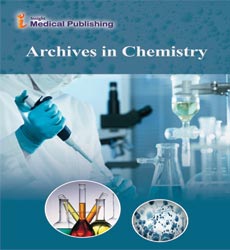Batch Distillation in Chemical & Process Engineering.
Joseph K* Lloyd's Register Foundation Centre for Safety & Reliability Engineering, University of Aberdeen, UK
*Corresponding author: Joseph K, Lloyd's Register Foundation Centre for Safety & Reliability Engineering, University of Aberdeen, UK; Email: joseph26@gmail.com
Citation: Joseph K (2021) Batch Distillation in Chemical & Process Engineering. Arch Chem Vol.2 No. 3:e002
Received date: June 04, 2021; Accepted date: June 19, 2021; Published date: June 26, 2021
Abstract
Inductively coupled plasma mass spectrometry may be a sort of mass spectrometry that uses inductively coupled plasma to ionize the sample. It atomizes the sample and creates atomic and little polyatomic ions, which are then detected. Energy storage is that the capture of energy produced at just one occasion to be used at a later time. A device that stores energy is typically called an accumulator or battery. Energy comes in multiple forms including radiation, chemical, gravitational potential, electrical potential, electricity, elevated temperature, heat of transformation and kinetic. Incineration is that the main waste-to-energy sort of treatment. It is a treatment technology involving destruction of solid waste by controlled burning at high temperatures. It is amid the discharge of warmth. This heat converted into energy. Electro active polymers (EAP) are actuation materials that are used to drive mechanisms and are fastly replacing conventional methods.
Introduction
Inductively coupled plasma mass spectrometry may be a sort of mass spectrometry that uses inductively coupled plasma to ionize the sample. It atomizes the sample and creates atomic and little polyatomic ions, which are then detected. Energy storage is that the capture of energy produced at just one occasion to be used at a later time. A device that stores energy is typically called an accumulator or battery. Energy comes in multiple forms including radiation, chemical, gravitational potential, electrical potential, electricity, elevated temperature, heat of transformation and kinetic. Incineration is that the main waste-to-energy sort of treatment. It is a treatment technology involving destruction of solid waste by controlled burning at high temperatures. It is amid the discharge of warmth. This heat converted into energy. Electro active polymers (EAP) are actuation materials that are used to drive mechanisms and are fastly replacing conventional methods. These materials are now applied in various fields including robotics, medicine, defence etc. Micro-Electro-Mechanical Systems (MEMS) is that the integration of mechanical elements, sensors, actuators, and electronics on a standard silicon substrate through microfabrication technology. Effect of Ethanol Gasoline Blend on NOx Emission in SI Engine different fuel composition, engine parameter and engine modification effects on NOx formation as well as mathematical approach for NOx prediction using ethanol. Here may be a list of seminar ideas for Chemical engineering students. Students belonging to 3rd year or final year can use these seminar topics. This list has been complied after collecting seminar topics that have encounter the forum since previous couple of years. If you've got any questions, be happy to ask them within the replies below. We also encourage you to share more seminar ideas, topics, ppts in order that we will update our list. Fluidized bed reactor is beneficial for heterogeneous (multiphase) reactions, separations, size enlargement, coating, and blending in chemical and pharmaceuticals industries. To develop a model and simulation of this reactor with advanced systems process engineering software (Aspen Plus). Aspen plus has the potential to simulate real factory performance, design improved plants, and intensify profitability in present plants. This modelling and simulation are applied Geldart B particle cla... The physical properties of CNSL extracted by pyrolysis were studied using standard procedures. The physical properties of the CNSL studied and results obtained compared with other extraction methods (hexane extracted and decarboxylated) from literature are moisture content 4.1%, (6.40%, 3.2%), density 0.943 (0.926, 0.926) viscosity 57cp (40cp, 358cp), pH 4.5 (4.5, 5.2) and therefore the percent composition of the CNSL compared with those from literature are cardol.
Citation: Joseph K (2021) Batch Distillation in Chemical & Process Engineering. Arch Chem Vol.2 No. 3:e002
Open Access Journals
- Aquaculture & Veterinary Science
- Chemistry & Chemical Sciences
- Clinical Sciences
- Engineering
- General Science
- Genetics & Molecular Biology
- Health Care & Nursing
- Immunology & Microbiology
- Materials Science
- Mathematics & Physics
- Medical Sciences
- Neurology & Psychiatry
- Oncology & Cancer Science
- Pharmaceutical Sciences
